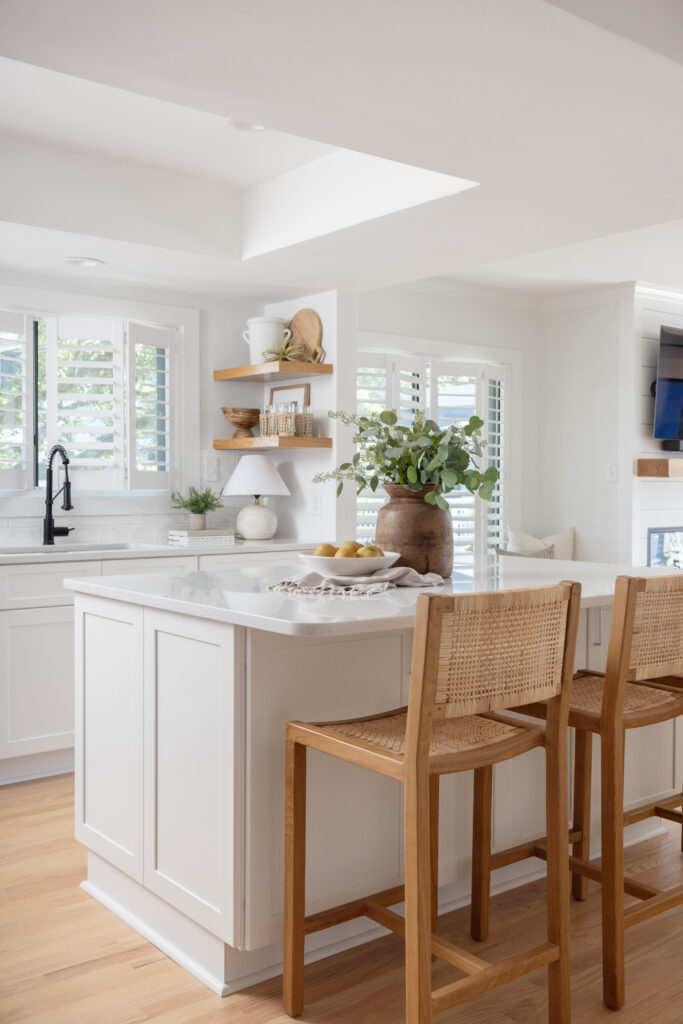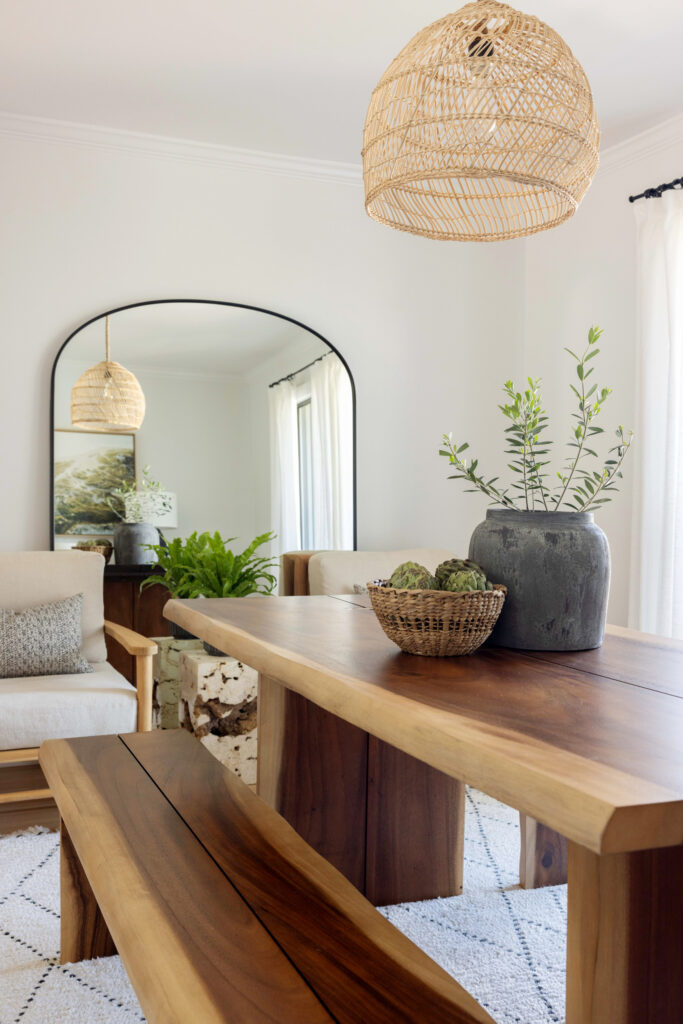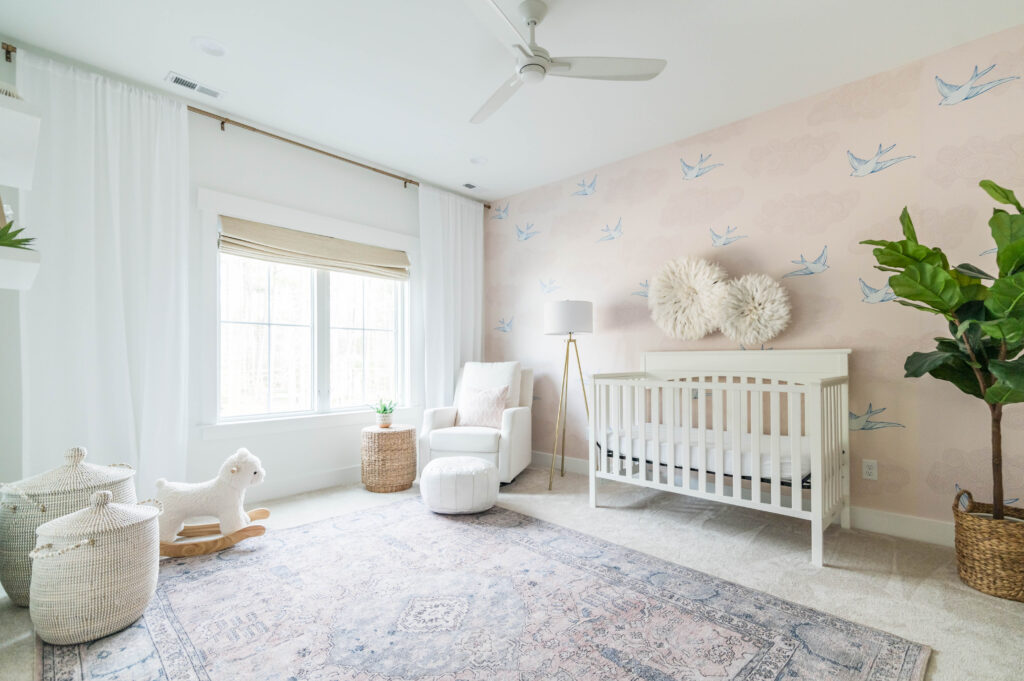How to Create a Cohesive Home: Best Designer Tips
A cohesive home embodies a living environment where every room seamlessly blends with one another. This creates a unified and visually pleasing look. In order to achieve cohesiveness in your home, consider all of the different elements involved to ensure that each one works together coherently.
Elements like paint, furnishings, textiles, wall decor, and accessories all play a vital role in creating a harmonious living space. A cohesive home is not a collection of individual rooms but rather a design concept where every room is thoughtfully integrated to reflect the overall aesthetic.
Whether it be a first home or a forever home, everyone would really benefit from a cohesive design scheme. Let’s discuss more about what a cohesive space entails and some different ways that you can create cohesion in your own home.

Why Create a Cohesive Home?
Creating a cohesive look is not just about the aesthetics of the home, but it’ also about bringing in comfortability, peace, and usefulness. Here we will explore why a cohesive home concept is beneficial to you,
Aesthetically Pleasing
We all know a cohesive home makes it look aesthetically pleasing. It’s like a well-orchestrated design of elements that work together to create a visually pleasing environment. When you enter a cohesive home, there’s a feeling of order and balance which brings immediate satisfaction.
Visual Interest
Cohesive homes are anything but dull, rather, they are rich in visual interest. The subtle connections and themes throughout the different rooms capture the attention of the onlooker. Each room helps contribute to the overall cohesive flow by adding depth and fascination of visual interest.

Balanced Look
When aiming to achieve a balanced look in your home, it involves careful consideration of colors, textures, and styles. Whether it be your master bedroom, dining room, or laundry room, think wisely! Carefully choosing your elements helps ensure a balanced look throughout the home. There is no single room that overpowers another but rather they all contribute to a well-proportioned home.
Comfortable and Harmonious Atmosphere
Cohesion isn’t just about looks, when spaces flow together seamlessly it creates a sense of calm and tranquility which in turn, makes you feel comfortable and at ease.
Intentional Use of Spaces
By utilizing cohesion in the home, it encourages each space to have intentional use for it’s intended purposes. When your home is thoughtfully designed, each room will naturally guide you to use it for what it’s meant to be used for. In turn, it makes your home more efficient and functional.

Keeps Spaces Defined
When you strive for a blended approach, it ensures that you are helping to keep the spaces in your home defined. When each room has a clear role within the overall design there will be no confusion about its purpose. Having clarity on each room makes it much easier to organize and decorate the individual rooms that serve their unique function.
A console table in the entry that compliments a console in the living room sets the stage for each space and helps the space function. This thoughtful connection can make the entryway a space for lighting, storage boxes, books, or whatever aligns with your style and the purpose each piece serves. .This is all based on the style you want to convey and the purpose each piece serves.
Creating a cohesive home is a multi-faceted endeavor. It’s about crafting a visually appealing space and at the same time making sure it is comfortable, harmonious, and purposeful.
A cohesive room provides a balanced look and encourages the intentional use of each area. So, whether you’re drawn to modern simplicity or timeless charm, striving for cohesiveness in your home can transform it into a place where both beauty and functionality flourish.
10 Ways to Create Cohesion in Your Home
Creating cohesion in your home is more than just a design concept; it’s a great way to transform your living space into a harmonious and visually pleasing environment. You’ll truly love the way your home feels once you create that cohesion. If you are wanting to learn how to do this, go down this list and follow these ten strategies to help you achieve a cohesive and balanced look in your home, ensuring that every room works together seamlessly.

Defined Color Palette
This is the foundation of cohesion and one of the easiest ways to ensure you have it. Creating a whole home color palette is a must. Choose a few colors you love and maintain that consistency throughout your home. Feel free to opt for shades within the same color family or utilize accent colors. There will likely be primary colors and secondary colors within your palette, and they all should work together. Some examples of this include greige, white, light blue, dark blue, stark white, warm white, black, gold, or tan. This particular color palette should extend beyond just paint colors and be incorporated into furnishings and decor to ensure a unified visual theme. There is still room to have a lot of colors with this approach, but there is thought behind the combinations you choose.
Diverse Colors and Textures
Consider the importance of varying colors and textures in your furnishings and decor but make sure you still stick with the chosen color palette. One of the best ways is by mixing textures like rough woods, smooth metals, and soft fabrics, as it helps add depth and interest to your home which in turn, creates a dynamic and interesting atmosphere.
Repeat Elements
Try to incorporate recurring elements in your home design. This helps to establish a sense of continuity. Consistent metal and wood tones are quite effective here. For example, use similar wood finishes for furniture and matching metal accents throughout your decor. If you want to learn how to do that, here’s an article on How to Design with Mixed Metals Like a Pro. Using repeating elements creates common threads throughout your home which gives off balance and intention.
Consistent Style
Maintaining a consistent design style throughout your home may be a more well known tip but it is crucial for cohesion. Whether you prefer the rustic charm of farmhouse, the timeless elegance of tradition, the sleek lines of modern, or any another style, ensure that the overall look aligns across all rooms. This ensures that your home tells a cohesive design story, shows your own style, and it creates a space that feels balanced and inviting.

Matching Trim
Trim may not always need to be the same color but it should follow the same style to create a sense of coherence and visual flow. This helps provide a seamless transition from room to room even if the walls in the rooms have different colors.
Uniform Door Knobs and Hinges
Attention to small details, such as door knobs and hinges can make a significant impact on cohesion. Select uniform colors and styles for these hardware components to ensure a unified design. This creates a seamless visual experience when moving from room to room. In turn, these minor elements contribute to a cohesive feel and polished aesthetic.
Lighting
Lighting and light fixtures can vary so make sure there is another repeating element in each room to maintain cohesion. This could be the style of lampshade, the type of bulbs used or the metal finishes on the light fixtures. This ensures that despite the variation in lighting, there is an underlying thread of similarity that runs through your home’s design. Here are some good examples of lighting ideas for your home,


Set the Tone in Your Entryway
The home’s entryway serves as the first impression and sets the stage for your entire space. It is the perfect space to showcase your selected colors and textures which gives your visitors a glimpse of the design palette and atmosphere of what’s to be expected throughout the home.
A Touch of Uniqueness
While we are striving for cohesion, don’t be afraid to add a unique touch to the space. For instance, if most of your home follows a gray/beige color scheme, you can choose bold colors like navy for a room but use it in a subtle way. Just remember to incorporate some grays and beiges in the furniture to maintain a connection with the overall theme. Think of it as an inside-out version of the rest of the house, providing a refreshing and distinctive contrast but still flows nicely. Remember cohesion doesn’t have to be boring!
You can Even Include the Kids’ Rooms
When it comes to kids’ rooms, allow for some flexibility! Let your children have a say and play around with their favorite colors and themes. Consider using complementing colors that work well with the rest of your home’s palette. For instance, if your home features mostly grays, beige, whites, and blues, a pink and blue girl’s room can work quite well.

Creating cohesion in your home involves a thoughtful approach to style, texture, color, and a consistency of design elements. While it is essential to maintain a unified theme, feel free to introduce unique touches to the home. By implementing these ten strategies, you can achieve a home that exudes harmony and visual appeal in every room.
The Big Picture
Creating a cohesive home requires thoughtful balance throughout. It can be hard to consider the big picture, but with these strategies, you’ll be able to put together a harmonious living space that you will love. Be sure to subscribe below for more style tips, or if you need help creating a cohesive home, fill out this inquiry form to learn more about working together.






